8 Places From Shakespeare That You Can Actually Visit
Why just watch a play when you can experience some of his most famous locations for yourself?

Juliet’s Balcony in Verona. (Photo: Spencer Wright/CC BY 2.0)
Ah, the Bard! While Shakespeare is known for his iconic characters and poetic dialogue, he was also a master of establishing place. From Ancient Greece to fair Verona, he often set his plays in real world cities and locations, lightly fictionalized for the stage.
Within these cities, Shakespeare would often set scenes in specific locations that were based on actual places, many of which still survive today. So join us as we take a short tour of eight real-world locations from the works of Shakespeare.
1. Kronborg Castle
Helsignor, Denmark

AKA Elsinore. (Photo: Dr. Splif/CC BY-SA 3.0)
“Gentlemen, you are welcome to Elsinore. Your
hands, come then. Th’ appurtenance of welcome is
fashion and ceremony.” - Hamlet, Hamlet, Act II, Scene II
Sitting on the sea on the eastern edge of Denmark is an ornate fortress known as Kronborg Castle. Shakespeare fans know it better as Elsinore. The historic place was originally established in the 1420s as a sea fort, but over a century later it was transformed into the ornate castle that still stands today. As Elsinore in Hamlet, the ramparts of the castle were where Hamlet saw the ghost of his father. Nowadays the castle is a UNESCO protected site, and open to the public.

(Photo: Guillaume Baviere/CC BY-SA 2.0)

(Photo: Bruno Cordioli/CC BY 2.0)
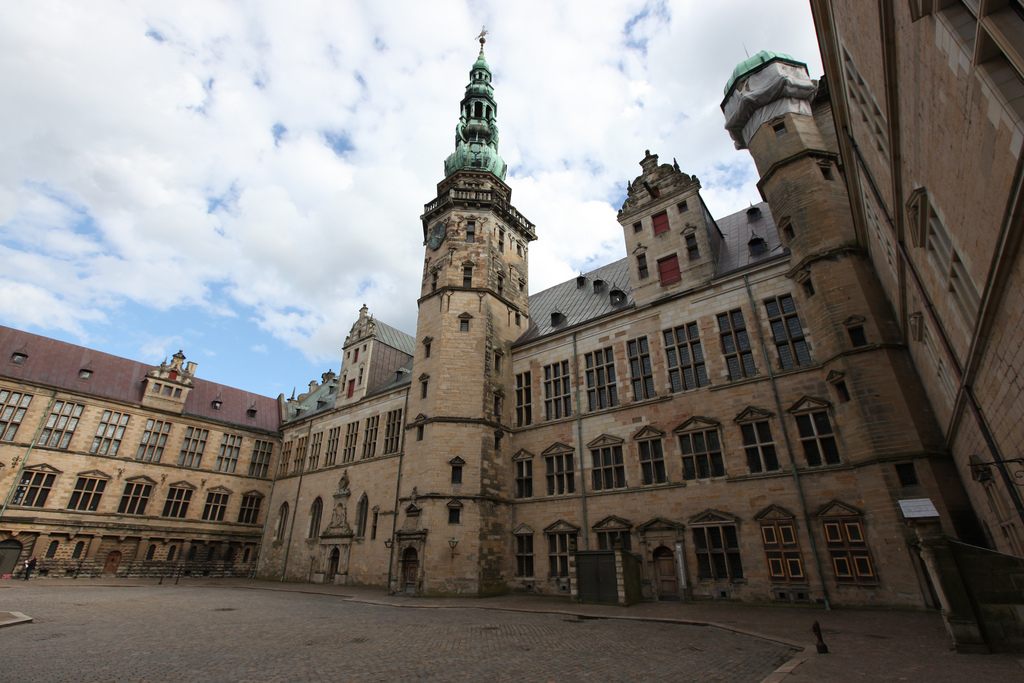
(Photo: Bruno Cordioli/CC BY 2.0)
2. Juliet’s Balcony
Verona, Italy

Just waiting for star-crossed lovers. (Photo: Jiuguang Wang/CC BY-SA 2.0)
“But soft! What light through yonder window breaks?
It is the east, and Juliet is the sun.” - Romeo, Romeo and Juliet, Act II, Scene II
Maybe the most famous place in all of Shakespeare’s canon, Juliet’s balcony is said to be the squat, stone window ledge on a building now known as the Casa di Giulietta. As the story goes, the house once belonged to the Capullo family, which some believe was the inspiration for the Capulets of the play.
Scholars agree that both Romeo and Juliet were fictional characters, and any real connection to the play is spurious at best, but the house is now one of the biggest attractions in Verona, and looks very much like it could have been the scene of the star-crossed lovers’ balcony exchange. There is even a tradition of people sticking romantic notes to the wall for luck in love, but since the medieval building is a protected historic site, the local government has been trying to put a stop to it.
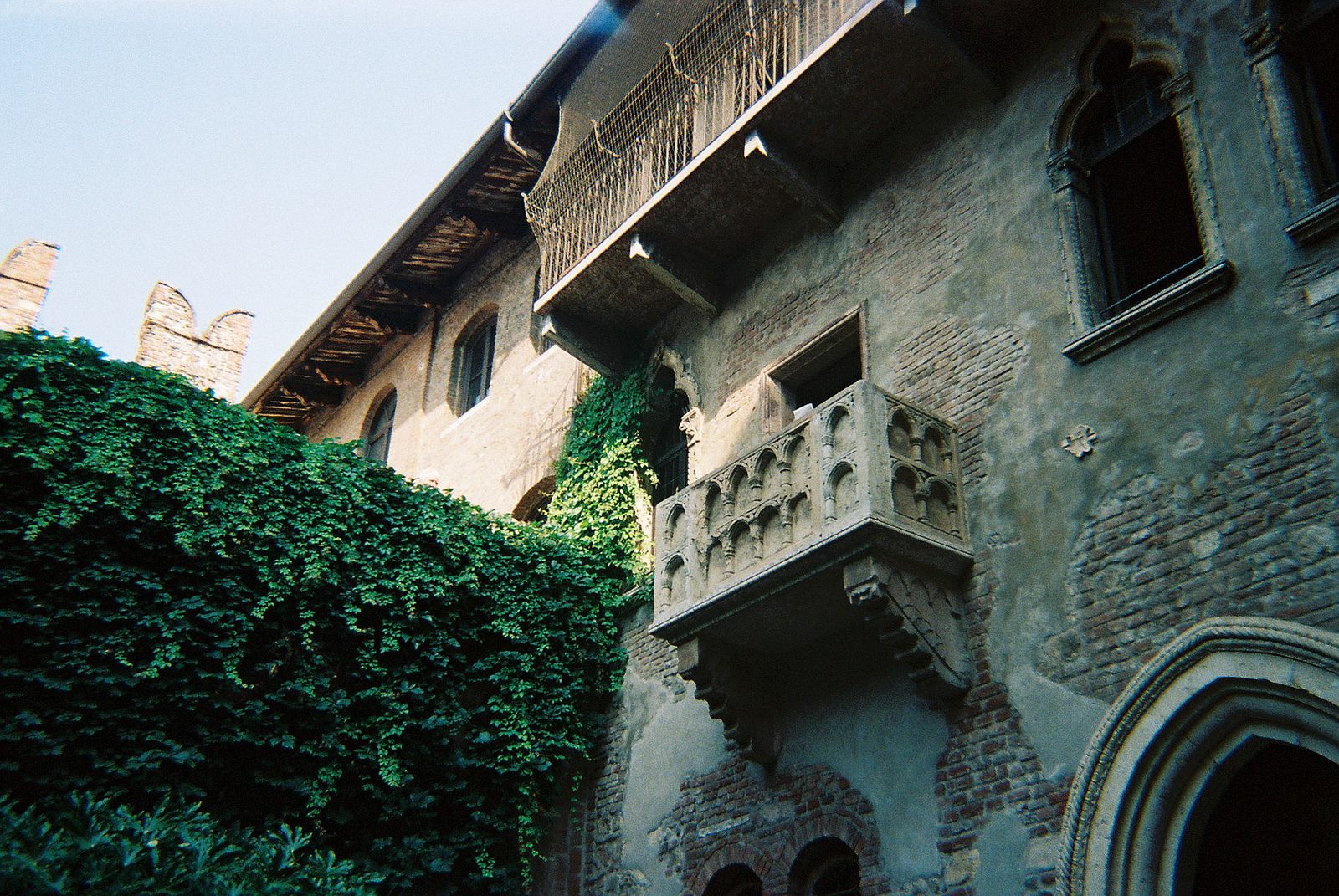
(Photo: Andy Hay/CC BY 2.0)

(Photo: Uwe Hermann/CC BY-SA 3.0)

(Photo: Elliot Brown/CC BY 2.0)
3. Romeo’s House
Verona, Italy

Wherefore art thou, Romeo? (Photo: Elliott Brown/CC BY 2.0)
“A dog of the house of Montague moves me.” - Sampson, Romeo and Juliet, Act 1, Scene I
Similar to Juliet’s balcony above, the Verona location known as Romeo’s House is said to have belonged to the Monteccis, a family that may have inspired the Montagues. While the connection to the play is tenuous, this has not stopped people from wanting to believe that it could have been the home of Juliet’s beau. The medieval home is not open to visitors, but there is a plaque outside that marks it as Romeo’s home.
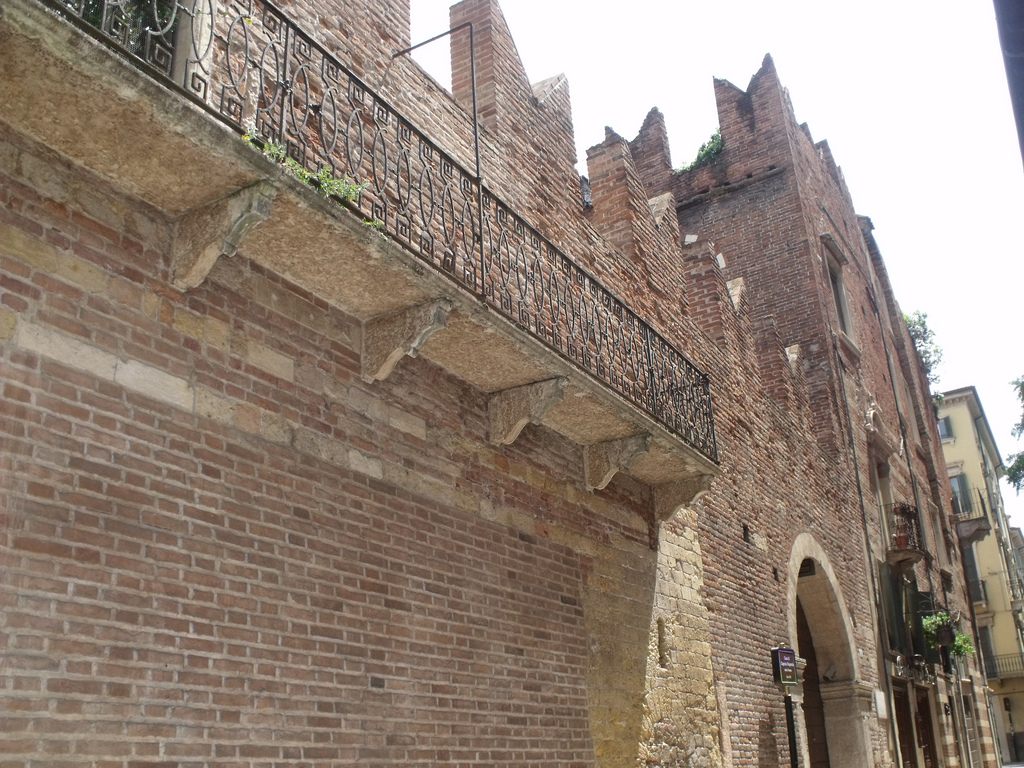
(Photo: Elliott Brown/CC BY 2.0)

(Photo: Elliott Brown/CC BY 2.0)

(Photo: Sky Eckstrom/CC BY-SA 2.0)
4. Pontefract Castle
Pontefract, England

The tower where Richard II died? (Photo: Tim Green/CC BY 2.0)
“O Pomfret, Pomfret! O thou bloody prison,
Fatal and ominous to noble peers!
Within the guilty closure of thy walls,
Richard the Second here was hacked to death,
And, for more slander to thy dismal seat,
We give thee up our guiltless blood to drink.” - Rivers, Richard III, Act III, Scene III
In the historical tragedy Richard III, Queen Elizabeth’s doomed brother Lord Rivers delivers the tale of what happened to Richard II, saying he was hacked up in a prison called Pomfret. Surprisingly, this probably happened. When the real Richard II was deposed, he was taken to a tower in Pontefract Castle, and it is believed that he was killed there. Pontefract Castle now lies in ruins, some of which are open to visitors.

(Photo: Tim Green/CC BY 2.0)

(Photo: Jerzy Kociatkiewicz/CC BY-SA 2.0)

(Photo: Tim Green/CC BY 2.0)
5. Jerusalem Chamber
London, England

The room where Henry IV died. (Photo: Wikipedia/Public Domain)
“I pray you, take me up and bear me hence
Into some other chamber. Softly, pray.” - King Henry IV, Henry IV, Part II, Act IV, Scene III
Located within Westminster Abbey, the room known as the Jerusalem Chamber is not only the setting of King Henry IV’s final moments in Shakespeare’s play about his life, but also the place where the real King Henry IV died in 1413.
The austere room was a later addition to the abbey and first served as the abbot’s chamber before being converted to a more general use space. Along with the rest of Westminster Abbey, the Jerusalem Chamber has been carefully preserved and still holds historic tapestries and a period chandelier. The room is normally off-limits to the public, but access is sometimes granted for special projects.

(Photo: Hi540/CC BY-SA 4.0)

(Photo: Jordan & Maxwell/Public Domain)
6. Ardennes Forest
French Ardennes, France

In this forest, things are as you like it. (Photo: Jean-Pol GRANDMONT/CC BY-SA 2.5)
“They say he is already in the Forest of Arden, and a
many merry men with him; and there they live like
the old Robin Hood of England.” - Charles, As You Like It, Act I, Scene I
Shakespeare’s romantic comedy As You Like It takes place almost entirely in a character-filled wood called the Forest of Arden. Most scholars agree that this is a version of a forest in the Ardennes, a mountainous region that sprawls over Belgium, France, Luxembourg, and Germany. The real forest was the site of the Battle of the Bulge in World War II.
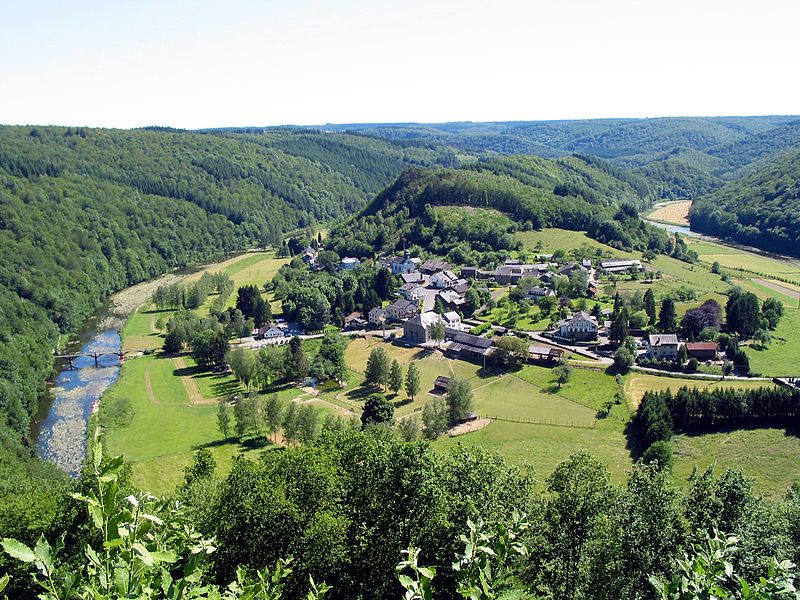
(Photo: Jean-Pol GRANDMONT/CC BY-SA 2.5)

(Photo: Roman Boed/CC BY 2.0)

(Photo: Roman Boed/CC BY 2.0)
7. Boar’s Head Inn
London, England

The tribute building on modern Eastcheap. (Photo: BH2008/CC BY-SA 3.0)
“Sirrah, Falstaff and the rest of the thieves are at
the door: shall we be merry?” - Prince Henry, Henry IV, Part I, Act II, Scene IV
Every great drunk needs a great bar to over-serve them, and for Shakespeare’s Falstaff, maybe literature’s greatest drunk, that place was the Boar’s Head Tavern on Eastcheap. The location was based on a bar that actually existed during Shakespeare’s time (although probably not in Falstaff’s), that was destroyed in the Great Fire of London in 1666. But even though the original bar burned down, its memory has managed to live on.
The inn’s sign was originally hung over the businesses that moved into the location after the fire, but it was eventually moved to the Globe Theatre. Just a stone’s throw from the site of the original bar, on where Eastcheap lies today, there is a building (now an office building) from 1868 that was built to honor the tavern and has a carved stone boar on the facade. You can’t drink there, but you could always bring a flask and wax poetic on the street.

(Photo: BH2008/CC BY-SA 3.0)
8. London Stone
London, England

The rock from which Cade made his proclamations. (Photo: Joe McGowan/CC BY 2.0)
“And here, sitting
upon London-stone, I charge and command that, of the
city’s cost, the pissing-conduit run nothing but
claret wine this first year of our reign.” - Cade, Henry VI, Part II, Act IV, Scene VI
Sitting behind a squat decorative gate, the London Stone is a mysterious chunk of rock that once belonged to a much larger stone that was installed nearby sometime around 1100. No one is quite sure what the original significance of the London Stone was, but it has been kept in the city as a landmark for centuries.
As it appears in Henry IV, the stone is used as a throne and symbol of authority in Shakespeare’s dramatized version of the story of English revolutionary Jack Cade. The current block behind the grill was moved to its position in the late 1700s, where it remains, looking bizarrely forgotten next to a garish modern storefront.

(Photo: tpholland/CC BY 2.0)

(Photo: Fin Fahey/CC BY-SA 2.0)
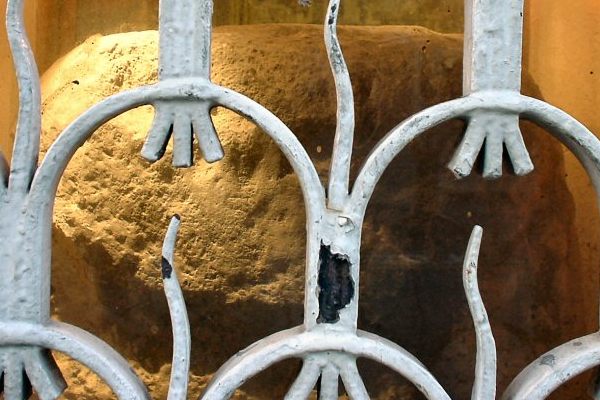



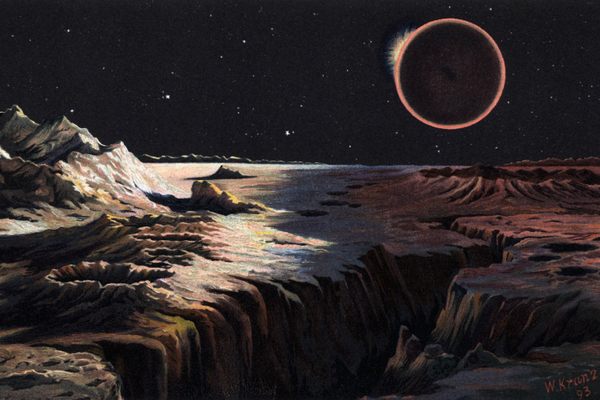


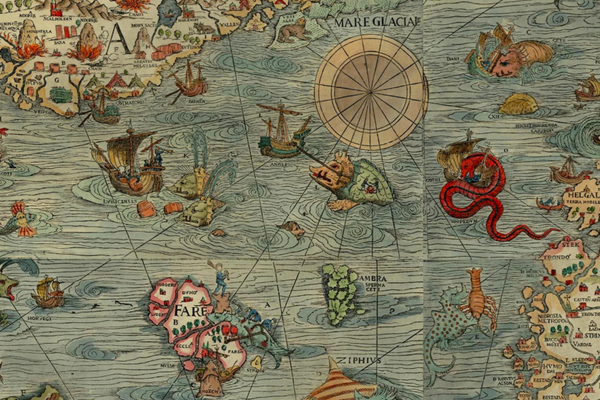






Follow us on Twitter to get the latest on the world's hidden wonders.
Like us on Facebook to get the latest on the world's hidden wonders.
Follow us on Twitter Like us on Facebook